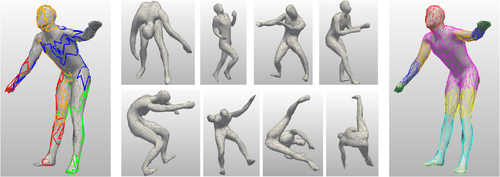Pre-recorded Sessions: From 4 December 2020 | Live Sessions: 10 – 13 December 2020
4 – 13 December 2020
Pre-recorded Sessions: From 4 December 2020 | Live Sessions: 10 – 13 December 2020
4 – 13 December 2020
#SIGGRAPHAsia | #SIGGRAPHAsia2020
#SIGGRAPHAsia | #SIGGRAPHAsia2020











Date/Time:
04 – 13 December 2020
All presentations are available in the virtual platform on-demand.
Lecturer(s):
Alon Lahav, Technion – Israel Institute of Technology, Israel
Ayellet Tal, Technion – Israel Institute of Technology, Israel
Bio:
Description: Most attempts to represent 3D shapes for deep learning have focused on volumetric grids, multi-view images and point clouds. In this paper we look at the most popular representation of 3D shapes in computer graphics---a triangular mesh---and ask how it can be utilized within deep learning. The few attempts to answer this question propose to adapt convolutions \& pooling to suit Convolutional Neural Networks (CNNs). This paper proposes a very different approach, termed MeshWalker, to learn the shape directly from a given mesh. The key idea is to represent the mesh by random walks along the surface, which "explore" the mesh's geometry and topology. Each walk is organized as a list of vertices, which in some manner imposes regularity on the mesh. The walk is fed into a Recurrent Neural Network (RNN) that "remembers" the history of the walk. We show that our approach achieves state-of-the-art results for two fundamental shape analysis tasks: shape classification and semantic segmentation. Furthermore, even a very small number of examples suffices for learning. This is highly important, since large datasets of meshes are difficult to acquire.
